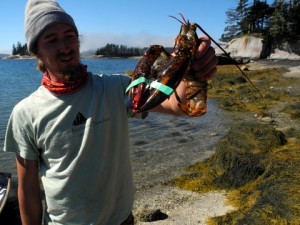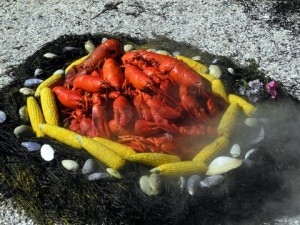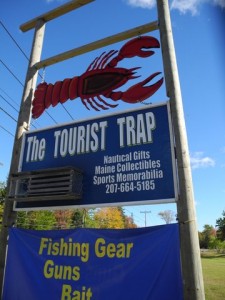Quick: When you think of Maine, what image pops to mind first? Chances are it’s lobster.
Is there any other state so identified with one kind of food — or so dependent for its economy on one? Vermont and maple syrup, perhaps, or Florida and oranges — except that Florida has a much more diversified economy.
On a recent trip to Maine for a windjammer cruise aboard the historic Nathaniel Bowditch sailing ship — which I’ll be writing about in subsequent posts — I was struck by the thousands of lobster traps floating in Penobscot Bay off the town of Rockland, where our cruise took place.
Lobsters love the Maine coast as much as Maine loves lobsters, at least until they get caught. Maine has the ideal environment for lobsters to thrive — cold, clean water and a rocky bottom habitat.
Recent catches have been plentiful. In 2012, more than 126 million pounds of lobsters were caught off Maine, with a wholesale value of more than $338 million. That’s a record harvest.
Nearly 6,000 licensed lobster harvesters currently ply the waters off Maine, and lobstering generates beneficial effects throughout the state’s economy, from processors to dealers, boat makers to marine outfitters, grocery stores to restaurants.
Not to mention the entire Maine tourism industry, which lures tourists partly by the chance to dine on lobsters — whether boiled, broiled, steamed, fried, sauced or served in soup, lobster rolls or omelets. Without lobsters, many of Maine’s picturesque coastal villages could fall on seriously hard times.

A crewman from the Nathaniel Bowditch holds up a lobster before an island lobster bake. Photo by Clark Norton
It wasn’t always this way. Lobster in America was once considered fit only to feed indentured servants and prisoners, and even they rebelled against it. Rather than serving as the centerpiece of restaurants in Maine, Boston and New York — and later throughout the country and other parts of the world — it was commonly used as fish bait and fertilizer.
But by the mid-20th century, lobster had become synonymous with fine eating. It’s safe to say that most baby boomers grew up with the notion that lobster was a luxury culinary item, something of a splurge — and prices rose accordingly.
Now, with lobster catches so abundant, prices have fallen to their lowest point in 20 years and Maine’s lobster industry plans to increase its marketing budget six-fold, with millions of dollars in funds provided by various fees levied by the state.
The idea is to get people to eat even more lobster than they already do. One thing they need to do is convince folks that lobster is not just a luxury item to be eaten a few times a year, or just on trips to Maine. They also need to educate diners on the easiest ways to eat lobster, since many folks are stymied by the best methods of getting the meat out of the claws and other harder to reach areas.
The ultimate idea is to make lobster prices go up again by increasing demand — so if the new marketing promotion works, it will benefit the lobster industry more than consumers, at least when it comes to prices.
But if it means that lobster will keep coming to the tables of America, I can’t really object.
I’ve already got my eye on attending the Maine Lobster Festival in Rockland next summer (July 30-August 3, 2014), when some 20,000 pounds of lobster will be served up in lobster rolls and other delights.
I understand that fried clams and other seafood will also be available. Now that’s my kind of festival, and I hope to see many of my fellow baby boomers there as well.
Be sure to download my free report, “How to Ride the Coming Wave of Boomers,” available here. It’s all about the best ways to market travel to baby boomers — the biggest-spending group of travelers the world has ever seen. It’s also the easiest way to subscribe to my blog, so you won’t miss a posting. Thanks!














2 Responses to In Maine, It’s Mainly Lobsters